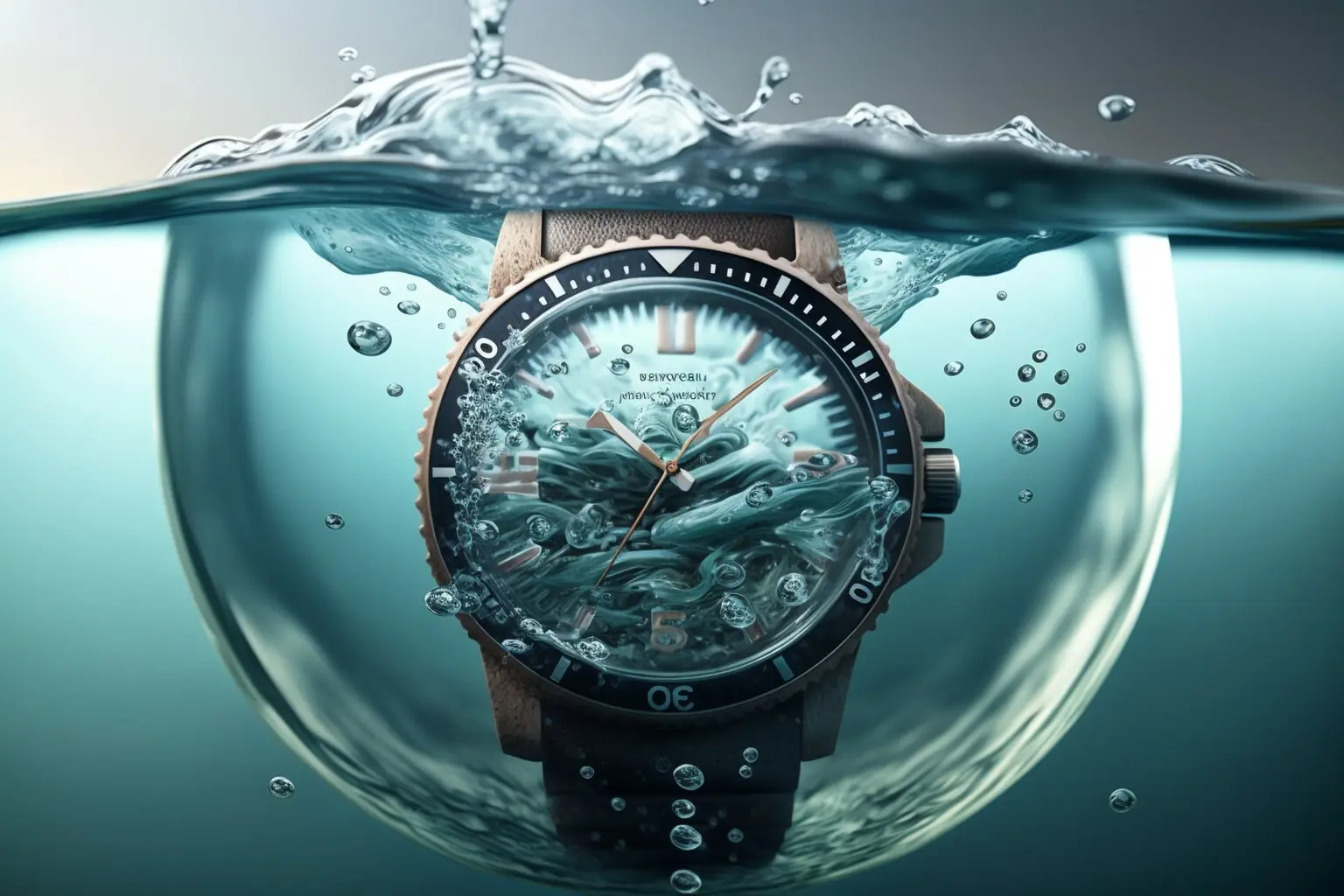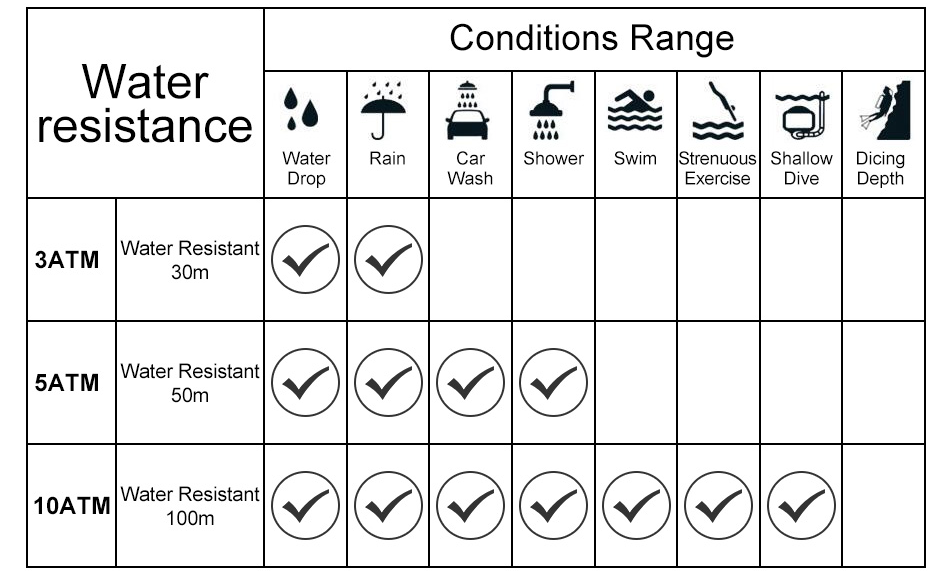Water resistance is an essential feature in many modern devices, especially in watches and electronics. The term "ATM water resistance meaning" often appears when discussing the durability of products against water exposure. Understanding what ATM means in this context is crucial for making informed purchasing decisions. Whether you're shopping for a watch or another water-resistant device, this guide will help you navigate the technicalities of ATM ratings.
Water resistance ratings have become a standard feature in product descriptions. However, many consumers are unsure about the specifics of these ratings, particularly when it comes to ATM. This article will break down the meaning of ATM water resistance, its implications, and how it affects the longevity of your devices.
By the end of this guide, you'll have a clearer understanding of what ATM water resistance means, how it's measured, and why it matters. Whether you're a watch enthusiast or simply looking for a reliable electronic device, this information will help you make smarter choices.
- Prmoviesreport Your Ultimate Guide To Streaming Movies Online
- Fikfapin A Comprehensive Guide To Understanding And Navigating The Platform
Table of Contents
- What is ATM Water Resistance?
- ATM vs Bar vs Meters: Understanding the Units
- How ATM Rating Works
- Water Resistance Testing Process
- Common Misconceptions About ATM Water Resistance
- ATM Rating for Watches
- ATM Rating for Electronics
- Tips for Maintaining Water Resistance
- Frequently Asked Questions
- Conclusion
What is ATM Water Resistance?
The term "ATM water resistance" refers to the ability of a device, typically a watch, to withstand water pressure at a specific depth. ATM stands for "atmospheres," which is a unit of measurement indicating the pressure a device can endure. For instance, a watch with a 3 ATM rating can handle water pressure equivalent to being submerged at a depth of 30 meters.
While ATM ratings are commonly associated with watches, they also apply to other electronic devices designed to be water-resistant. Understanding the ATM rating is vital for ensuring that your device can handle the conditions you expose it to, whether it's swimming, diving, or simply washing your hands.
Why is ATM Water Resistance Important?
Water resistance is critical for the longevity and functionality of devices exposed to moisture. Without proper water resistance, devices can suffer damage from water ingress, leading to costly repairs or even complete failure. An accurate understanding of ATM ratings ensures that you choose the right device for your needs and activities.
- Mkvin Movies The Ultimate Hub For Movie Enthusiasts
- 3movierulz Apk The Ultimate Guide To Downloading And Using Movies And Tv Shows
ATM vs Bar vs Meters: Understanding the Units
When discussing water resistance, you may encounter different units of measurement, including ATM, bar, and meters. Each unit represents the pressure a device can withstand, but they are not interchangeable without conversion.
- ATM: Represents atmospheres, with 1 ATM equaling the pressure at sea level.
- Bar: A metric unit of pressure, with 1 bar approximately equal to 1 ATM.
- Meters: Indicates the depth at which a device can withstand water pressure.
For example, a 10 ATM rating is equivalent to 10 bar or 100 meters of water resistance. Understanding these conversions helps clarify the capabilities of your device.
Conversion Table for ATM, Bar, and Meters
Below is a simple conversion table to help you understand the relationship between ATM, bar, and meters:
- 3 ATM = 3 bar = 30 meters
- 5 ATM = 5 bar = 50 meters
- 10 ATM = 10 bar = 100 meters
- 20 ATM = 20 bar = 200 meters
How ATM Rating Works
ATM ratings are determined through rigorous testing procedures conducted by manufacturers. These tests simulate real-world conditions to ensure that devices meet their advertised water resistance levels. The process involves exposing devices to water pressure at specific depths and monitoring their performance.
It's important to note that ATM ratings do not guarantee complete waterproofing. Devices rated for water resistance are designed to withstand specific pressures but may not be suitable for all water-related activities. For example, a 3 ATM-rated watch is suitable for handwashing but not swimming.
Factors Affecting ATM Ratings
Several factors influence the water resistance of a device, including:
- Seal quality
- Material durability
- Design specifications
- Manufacturing standards
Manufacturers must adhere to strict guidelines to ensure that their products meet the advertised ATM ratings, providing consumers with reliable and safe devices.
Water Resistance Testing Process
The testing process for water resistance involves several stages to ensure accuracy and reliability. Manufacturers use specialized equipment to simulate various water pressures and conditions, ensuring that devices can withstand real-world exposure.
Tests typically include:
- Static pressure testing
- Dynamic pressure testing
- Temperature variation testing
These tests help identify potential weaknesses in a device's water resistance capabilities, allowing manufacturers to improve their designs and meet industry standards.
Industry Standards for Water Resistance
International standards, such as ISO 22810 for watches, govern the testing and certification of water-resistant devices. These standards ensure that products meet specific criteria for water resistance, providing consumers with confidence in their purchases.
Common Misconceptions About ATM Water Resistance
Despite the widespread use of ATM ratings, many misconceptions exist about their meaning and implications. Below are some common myths and the truth behind them:
- Myth: A higher ATM rating means the device is completely waterproof.
- Truth: No device is entirely waterproof. Even high ATM ratings have limits and are subject to specific conditions.
- Myth: Water resistance is permanent.
- Truth: Water resistance can degrade over time due to wear and tear, requiring regular maintenance and testing.
Understanding these misconceptions helps consumers make informed decisions and properly care for their devices.
How to Avoid Water Damage
To prevent water damage, follow these tips:
- Avoid exposing devices to water beyond their rated limits.
- Regularly check seals and gaskets for wear and tear.
- Have devices professionally tested and serviced as needed.
ATM Rating for Watches
Watches are one of the most common devices associated with ATM water resistance ratings. Understanding the ATM rating for watches is essential for ensuring their longevity and functionality. Watches with higher ATM ratings are suitable for more demanding activities, such as swimming and diving.
For example:
- 3 ATM: Suitable for handwashing and light rain exposure.
- 5 ATM: Suitable for swimming and showering.
- 10 ATM: Suitable for snorkeling and other water sports.
- 20 ATM: Suitable for professional diving.
Choosing the Right Watch for Your Activities
When selecting a watch, consider your lifestyle and activities. Choose a watch with an ATM rating that matches your needs to ensure optimal performance and longevity.
ATM Rating for Electronics
Electronics, such as smartphones and fitness trackers, also feature ATM water resistance ratings. These ratings indicate the device's ability to withstand water exposure during everyday use and specific activities.
For example:
- Smartphones with an IP67 rating can withstand water immersion up to 1 meter for 30 minutes.
- Fitness trackers with a 5 ATM rating are suitable for swimming and water-based activities.
Maintaining Water Resistance in Electronics
To maintain water resistance in electronics, follow these guidelines:
- Avoid exposing devices to water beyond their rated limits.
- Regularly clean and dry devices after water exposure.
- Have devices serviced by professionals if water resistance is compromised.
Tips for Maintaining Water Resistance
Proper maintenance is key to preserving the water resistance of your devices. Follow these tips to ensure your devices remain functional and durable:
- Regularly inspect seals and gaskets for wear and tear.
- Have devices professionally tested and serviced as needed.
- Avoid exposing devices to extreme temperatures or pressure changes.
By following these tips, you can extend the lifespan of your devices and ensure they remain water-resistant for years to come.
When to Replace Water-Resistant Devices
Over time, water resistance can degrade due to wear and tear. If you notice any signs of water damage or reduced performance, it may be time to replace your device. Regular maintenance and inspections can help identify issues early, preventing costly repairs or replacements.
Frequently Asked Questions
What Does ATM Mean in Water Resistance?
ATM stands for "atmospheres," a unit of measurement indicating the pressure a device can withstand. For example, a 3 ATM rating means the device can handle water pressure equivalent to being submerged at a depth of 30 meters.
Is ATM the Same as Bar?
Yes, ATM and bar are equivalent units of pressure measurement. One ATM is approximately equal to one bar.
Can a 3 ATM Watch Be Used for Swimming?
No, a 3 ATM watch is not suitable for swimming. It is only designed for light water exposure, such as handwashing and light rain.
Conclusion
Understanding ATM water resistance meaning is crucial for making informed decisions when purchasing water-resistant devices. Whether you're shopping for a watch or an electronic device, knowing the ATM rating and its implications ensures that your device can handle the conditions you expose it to.
We encourage you to share this article with others and leave a comment below if you have any questions or feedback. For more informative content, explore our other articles on technology and lifestyle.
- Unveiling The World Of Movierulz 2025 The Ultimate Guide
- Hdb4u Tv Movies Your Ultimate Guide To Streaming Entertainment


